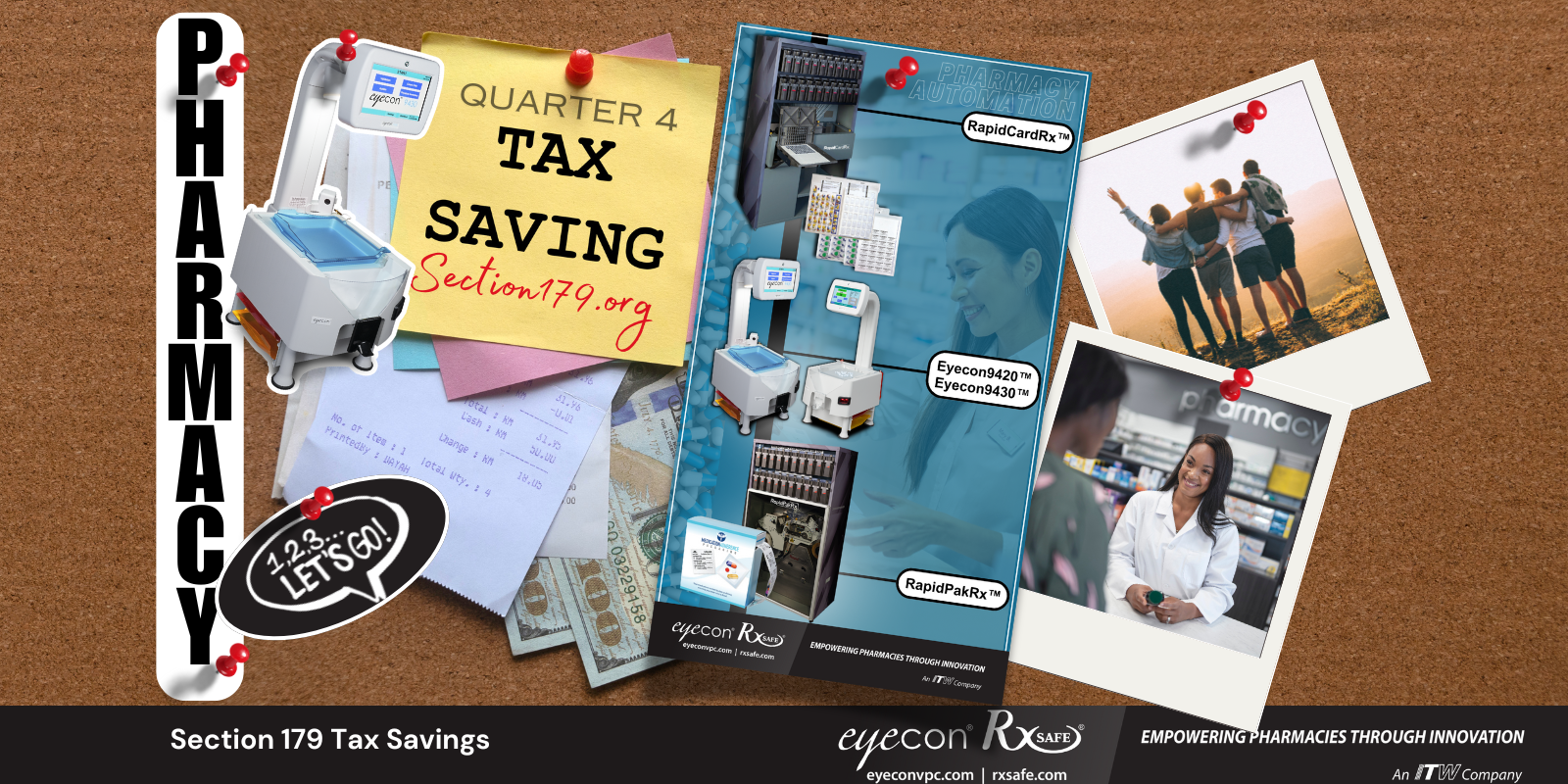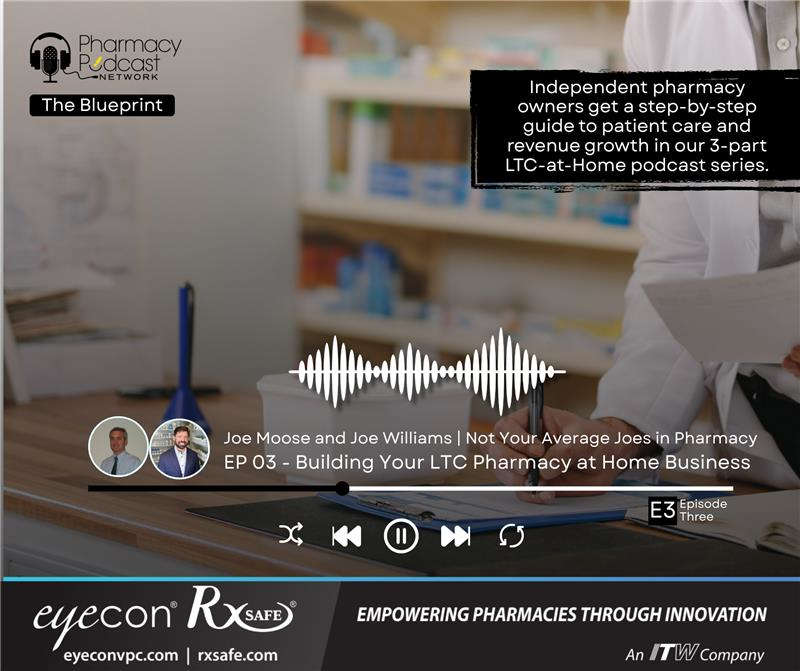Independent pharmacies have faced decreasing profits due to declining reimbursements and ever-increasing overhead costs.
With recent staffing shortages and increased big box chain competition, the pressure to find alternative revenue streams has never been greater.
Todd Eury of the Pharmacy Podcast Network recently hosted a special panel discussion at the 2022 NCPA Annual meeting in Kansas City, Mo. Pharmacists and industry insiders talked about innovative ways to increase pharmacy revenue, including taking advantage of Medical at Home, providing adherence packaging, offering specialty pharmacy medications, and partnering with health care providers or hospitals.
The panelists for this event included:
• Ronna Hauser, PharmD, Senior VP of Policy at NCPA
• Susan Rhodus, Senior VP of Contracting at GeriMed
• Lisa Faast, PharmD, CEO of DiversifyRx
• Tim Mitchell, RPh, Pharmacy Owner of Mitchell's Drugs
• Kelby Gorman, RPh, PIC of Moore's Pharmacy
• Debbie Marcello, RN, CEO of Happier at Home
Here are some highlights from the discussion.

Todd Eury: How has Medical at Home improved the results for pharmacies?
Ronna Hauser: Medical at Home is a wonderful opportunity. Long-term care pharmacy is an important part of your business. If you're not already into long-term care, you should consider how to get into long-term care. There are a lot of opportunities. Approximately 50% of the long-term care market is serviced by independently owned pharmacies. So, it's a big opportunity. We put a lot of time and effort at NCPA into long-term care in helping you grow that practice. And Medical at Home is a key component. It's our number one advocacy priority for NCPA's long-term care division. My number one priority over the last several years has been to get CMS to recognize these services. And great news is about less than a year ago, they did recognize these services. Now we have more work to do, but it's important because there are no DIR fees in long-term care. With Medical at Home, you can capture these patients and retain them. You can keep them by those high-level services you're providing to patients in a home setting, who would otherwise need to be in an institutional setting. So, it's a really, really important opportunity.
“You can get with an ACO, you can get with a Medicaid managed program and actually make money in a different way in addition to what you're doing with the Medical at Home...there are methods that you can use to make money doing the services that you do best.”
- Susan Rhodus, on the benefits of working with GeriMed
Todd Eury: Susan, following up on the results that you've seen from your relationship with so many pharmacies that are working with GeriMed...
Susan Rhodus: It not only offers you an opportunity to have packaging and get your special packaging out to people and following the 10 criteria for long-term care delivery, 24/7 service that you offer to your patients that you're taking care of with Medical at Home. But it also offers a chance for you to do clinical services and offer them medication management, reconciliation - a lot of other things that pharmacists have been trying to do for years. You can get with an ACO1, you can get with a Medicaid managed program and actually make money in a different way in addition to what you're doing with the Medical at Home. So, it offers a lot of variety of services that you can provide that you may have been thinking about for years in your pharmacy and never had an opportunity to do that. Yes, we want provider status, we need provider status, but in the meantime, there are methods that you can use to make money doing the services that you do best.
And again, we've talked about no DIR fees. Unfortunately, we're still working through getting the PBMs to pay for Medical at Home appropriately; it should be paid at a skilled nursing facility rate. But in the meantime, you can get a retail rate with no DIR fees with many of the payers, not all of them, but many of them. And that should help your bottom line to help ensure that you are able to be profitable.
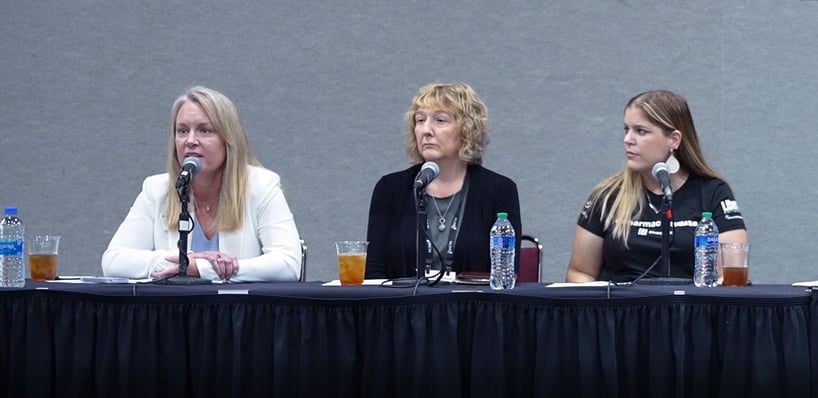
Todd Eury: As a pharmacy owner, what's the biggest challenge that you're seeing right now in independent pharmacy?
Lisa Faast: I think right now with the whole pandemic and “quiet quitting” and all that kind of stuff, I know in my own pharmacies, staffing issues have been probably the biggest headache. I mean, who in here has had staffing issues? You know, we kind of talked about that before. Whether it's hiring or retaining – I had an employee that went on maternity leave and decided not to come back. And I think staffing issues are a very big deal. But I think the reason there are staffing issues is because all these other businesses are able to increase their pay to attract talent. And in pharmacy, even though we might want to, we're not able to because of the other things: the DIR fees, the low reimbursements, and all these other things [that hurt profitability]. And so, it's not like working in a pharmacy is a bad environment, but you know, when McDonald's and Bucky's down the street is offering $20 an hour and you're trying to get a technician for $15, you know, that's just incongruent with the world that we're living in right now.
So, I think if we can fix the profitability issues in pharmacies, your staff issues will actually become better because you'll actually be able to afford the kind of high-quality staff that you need. So, ultimately, it always comes back to profitability. That is the biggest issue in pharmacy. And when you fix that, the downstream effect is you get to fix the other parts of your business as well. So, I think that is ultimately the biggest issue.
Todd Eury: Let's talk about future opportunities. And we know that Medical at Home has improved results within the pharmacy, but can you expand upon that for us?
Susan Rhodus: So Medical at Home is not an “easy” button. It's not: “I filled my adherence packaging, I send my delivery driver, I knock on the door, I hand it to him, I'm done.” That is not Medical at Home. These patients require your extra services that we are talking about beyond that. So, it may be just like Debbie was talking about, it may be that you are picking up the phone and calling and talking to someone else who can provide food to that patient or can provide other care to that patient, which again, turns around and gets referrals for you because now they found somebody else to go to. We have a pharmacy owner in Philadelphia who's doing this with about 1400 patients and she actually has an ACO that she works with directly, and they refer patients to her every day. So, every day she's taking care of people.
And the idea is that again, you're doing things like medication reconciliation. When somebody goes to the hospital and they get out of the hospital and you're going home, I guarantee you the majority of their medications are wrong when they come out of the hospital. And if they're not wrong, they're duplicated. So that's a place where you have the expertise to say, “No, Mr. Jones, do not take two statins, take one statin.” Because the one you had in the hospital is not the one you were on when you left your house. So those are the kind of things that you all can provide directly to them to make sure that they stay out of the hospital and out of the ER. And that's a super important place for you to be in.
Todd Eury: Tim, you mentioned in the beginning some supplement opportunities and I'm thinking of increasing revenues through other things that community pharmacies are doing. Can you share with the audience? Are you pursuing new revenue streams? What are those revenue streams?
Tim Mitchell: So, in Missouri, it's required that we receive a prescription for supplements and so forth. So, what we're looking at our main store, we have about 700 patients that are on our med sync program. And so, our technicians and community health workers that we're using will make these monthly calls. And when we're, especially if we have a new patient that's coming on board that we're onboarding, we will ask them. I mean, some like adherence packaging, some do not. But most of our patients, when they see what kind of product the RapidPakRx produces, they think it's great, especially caregivers. But we ask them if they have supplements. Do you take a vitamin? Do you take multivitamins? Do you take, you know, vitamin D or whatever? And then if they say yes, then we of course have their physician information.
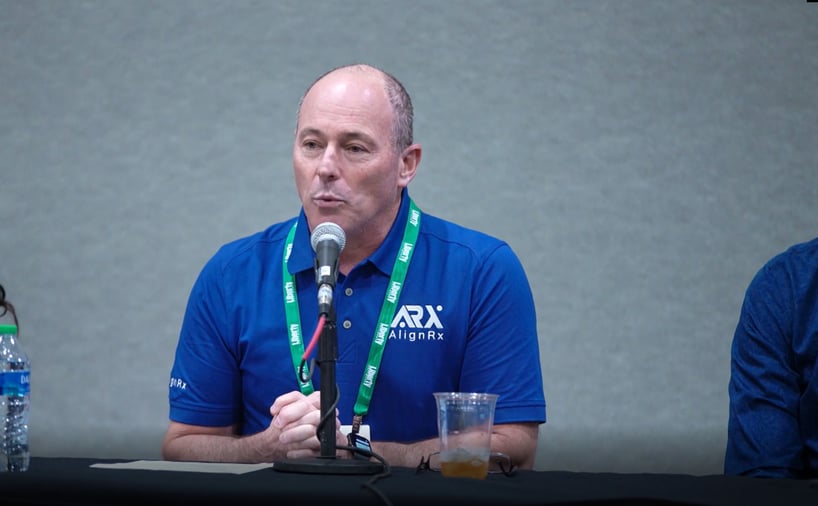
“That's actually increased our over-the-counter sales as well as increased the adherence packaging work... We've actually had three individuals that are packaging, about 220, 230 patients per month. Staying very busy and our patients are very happy with that. To be honest with you, the supplement sales have increased because of that as well.”
- Tim Mitchell on offering adherence packaging and working with providers
We go ahead and call the physician for an order, and we receive a standing monthly order or receive a monthly order for that product. And we go ahead and package that in there. That's actually increased our over-the-counter sales as well as increased the adherence packaging work for the team. We've actually had three individuals that are packaging, about 220, 230 patients per month, staying very busy, and our patients are very happy with that. To be honest with you, the supplement sales have increased because of that as well. Not as much as some individuals but requiring a prescription does require a little bit more work for that. There are other opportunities that my neighbor next door here will be able to tell you a little bit more about, too.
Todd Eury: Yes, Kelby, I want to hear about the automation that you're implementing and how that's helping.
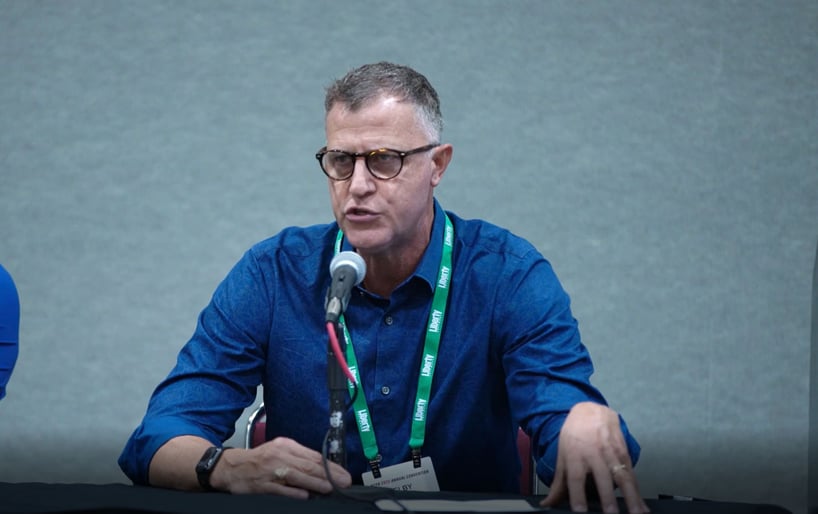
Kelby Gorman: Yeah, we've taken that a step further, not only doing what Tim's doing, but I've got two stores. One of ours is a wellness store where we've focused on supplement sales. And so, prior to getting the RapidPakRx, we were selling $25,000 a month in supplement sales. And with this, I've taken the RapidPakRx, I've been able to design 15 different multivitamin packs or vitamin packs that I'm selling now and have increased our revenue by 30% just by doing that. So, we've gone from anywhere from $7,500 a month in vitamin packs to $15,000 a month depending upon immune sales and so forth. So, it's all about thinking outside the box. You've got to look at all of these different things. When we looked at the RapidPakRx, we initially were looking at it for adherence packaging, but I'm sitting here as a businessperson thinking, how on earth am I going to pay for this while that adherence packaging grows? And so, we dove in with the vitamin packs and we have more than paid for what it cost to purchase the RapidPakRx while we're now decreasing DIR fees and building. So, it's, it's just one step on top of another.
“...prior to getting the RapidPak, we were selling $25,000 a month in supplement sales... I've been able to design 15 different multivitamin packs or vitamin packs that I'm selling now and have increased our revenue by 30% just by doing that.”
- Kelby Gorman on increased revenue from adherence packaging and nutraceuticals
Todd Eury: I want to take a pause to ask Kelby about implementation because these pharmacy owners out here don't want their business disrupted, and implementing new technology: it's a pain in the butt. So, I want to hear about implementation from the time you implement to the time things are flowing and new workflows that you're building. Talk to us about the RxSafe experience.
Kelby Gorman: Obviously, anytime you get new technology, the first thing you're going to get is icy stares from your staff. <laughter> Like, “What the heck are you doing to us?” I mean, that's that, but what you always have to try to emphasize with them is these are ways that we are going to work more efficiently. So you've got to find out your workflow. I could sit here and tell you my workflow is just like this, but it's different in every store. You've got to sit down with your team, and you've got to talk, and you've got to say, “This is the plan, this is where we're going. Let's, as a team, figure out how we're going to get there.” So, you've got to get your team on board with implementation. You've got to have buy-in, just like if you're talking to your customers. If you're doing, if you're talking to your customers about weight loss, you’ve got to have buy-in from them on the weight loss first. So, for your teams the same thing. You have to have buy-in from them. So, you've got to encourage your staff to look at it as a positive thing and say, “This is not going to take my job, this is going to make my job easier.” And then it's going to allow us also when you start talking dollars and cents, it's going to make us more profitable, which allows us as a company to do more things for our staff and allows us to do more things for our community.
To watch the whole panel discussion, click here.
If your pharmacy is looking for alternative streams of income or is struggling with profitability, talk with one of our business development experts by calling (833) 791-1772, or by leaving us a message here.
1An ACO or Accountable Care Organization (ACO) is a group of doctors, hospitals, and/or other health care providers who work together to improve the quality and experience of care that patients get. [Medicare.gov]


.png)

